Term 3 Unit 2 | Civics | 7th Social Science - Market and Consumer Protection | 7th Social Science : Civics : Term 3 Unit 2 : Market and Consumer Protection
Chapter: 7th Social Science : Civics : Term 3 Unit 2 : Market and Consumer Protection
Market and Consumer Protection
Unit ŌĆō 2
Market and
Consumer Protection
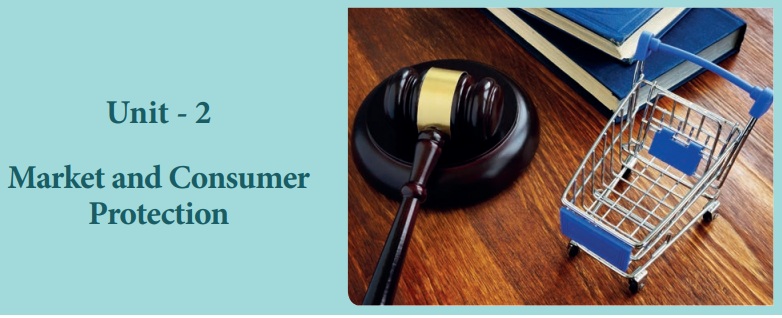
Learning
Objectives
ŌĆó
To identify four different types of market structures.
ŌĆó
To know the differences between each type of market structure.
ŌĆó
To understand why consumers need protection.
ŌĆó
To understand the rights of consumers.
Introduction
When
we talk about a market we generally visualise a crowded place with a lot of
shops and consumers. People are buying different types of goods like groceries,
clothing, electronics, etc in the market.
And
the shops are also selling a variety of products and services as well. So in a
traditional sense, a market is where buyers and sellers meet to exchange their
goods and services.
But
what is a market in economics? In economics, we do not refer to a market as a
physical place. Economists described a market as coming together of the buyers
and sellers, i.e. an arrangement where buyers and sellers come in direct or
indirect contact to sell/buy goods and services. For example, the market for
books will constitute all the sellers and buyers of books in an economy. It
does not necessarily refer to a geographic location.
A
set up where two or more parties engaged in exchange of goods, services and
information is called a market. Ideally a market is a place where two or more
parties are involved in
buying and selling. The two parties involved in a transaction are called seller
and buyer. The seller sells goods and services to the buyer in exchange of
money. There has to be more than one buyer and seller for the market to be
competitive.
Features of a Market
In economics, the term market refers
to the shops for one commodity or a set of commodities. For example a market
for rice, a market for cloth, a market for electronics goods, etc.

1.
A market is also not restricted to one physical or geographical location. It
covers
a
general wide area and the demand and supply forces of the region.
2.
There must be a group of buyers and sellers of the commodity to constitute a
market. And the relations between these sellers and buyers must be business
relations.
3.
Both the sellers and buyers must have access to knowledge about the market.
There should be an awareness of the demand for products, consumer choices, and
preferences, fashion trends, etc.
4.
At any given time only one price can be prevalent in the market for the goods
and services. This is only possible in the existence of perfect competition.
Classification
of Markets
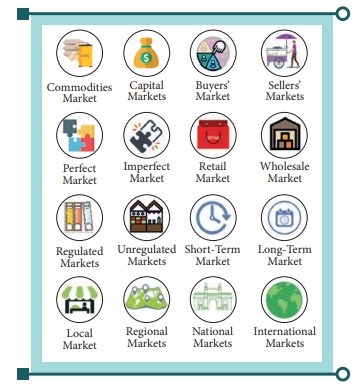
Broadly
there are two classifications of markets ŌĆō the product market and the factor
market. The factor market refers to the market for the buying and selling of
factors of production like land, capital, labour, etc. The other classification
of markets are as follows,
1. On the
Basis of Geographic Location
Local Markets:
In such a market the buyers and sellers are limited to the local region or
area. They usually sell perishable goods of daily use since the transportation
of such goods can be expensive.
Regional Markets:
These markets cover a wider are than local markets like a district, or a
cluster of few smaller states
National Market:
This is when the demand for the goods is limited to one specific country. Or the
government may not allow the trade of such goods outside national boundaries.
International Market:
When the demand for the product is international and the goods are also traded
internationally in bulk quantities, we call it as an international market.
II. On
the Basis of Time
Very Short Period
Market: This is when the supply of the goods is fixed, and
so it cannot be changed instantaneously. Say for example the market for
flowers, vegetables. Fruits etc. The price of goods will depend on demand.
Short Period Market:
The market is slightly longer than the previous one. Here the supply can be
slightly adjusted. Example:
Long Period Market:
Here the supply can be changed easily by scaling production. So it can change
according to the demand of the market. So the market will determine its
equilibrium price in time. Example:
III. On
the Basis of Nature of Transaction
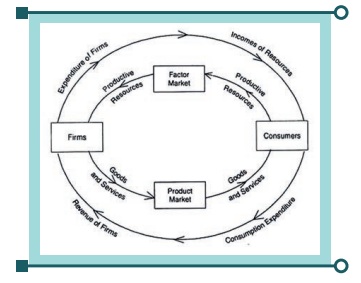
Spot Market: This is where spot transactions occur,
that is the money is paid immediately. There is no system of credit.
Future Market: This is where the transactions are
credit transactions. There is a promise to pay the consideration sometime in
the future.
IV. On the Basis of
Regulation
Regulated Market: In such a market there is
some oversight by appropriate government authorities. This is to ensure there
are no unfair trade practices in the market. Such markets may refer to a
product or even a group of products. For example, the stock market is a highly
regulated market.
Unregulated Market: This is an absolutely free market.
There is no oversight or regulation, the market forces decide everything.
Example:
V. On the basis of
nature of competition
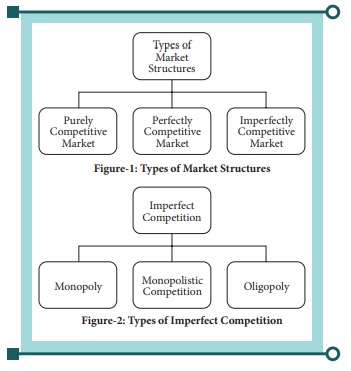
Monopoly:
Monopoly refers to a market
structure in which there is a single producer or seller that has a control on
the entire market. This single seller deals in the products that have no close
substitutes.
Monopolistic
Competition:
The term monopolistic competition
was given by Prof Edward H. Chamberlin of Harvard University in 1933 in his
book Theory of Monopolistic Competition. The term monopolistic competition
represents the combination of monopoly and perfect competition. Monopolistic
competition refers to a market situation in which there are a large number of
buyers and sellers of products. However, the product of each seller is
different in one aspect or the other.
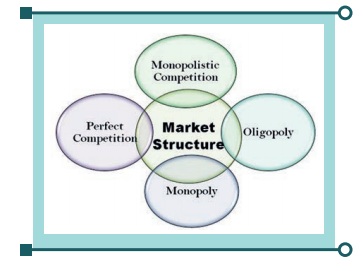
Oligopoly:
The
term oligopoly has been derived from two Greek words, Oligoi means few and poly
means control. Therefore, oligopoly refers to a market form in which there are
few sellers dealing either in homogenous or differentiated products.
1. Who is
a Consumer?
A
Consumer is a person w ho purchases a product or avails a service for a
consideration, either for his personal use or to earn his livelihood by means
of self employment.
The
consideration may be:
Ō£ō Paid
Ō£ō Promised
Ō£ō Partly paid and partly
promised.
It
also includes a beneficiary of such goods/services when such use is made with
the approval of such person.
2. Who is
not a Consumer ?
A
person is not a consumer if he/she:
Ō£ō Purchases any goods or
avails any service free of charge;
Ō£ō Purchases a good or
hires a service for commercial purpose;
Ō£ō Avails any service
under contract of service.
What is Unfair Trade
Practice?
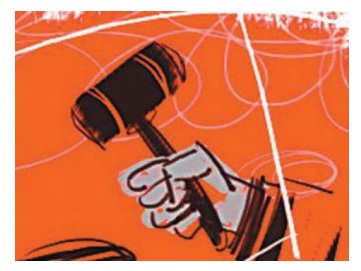
An
ŌĆ£unfair trade practiceŌĆØ means a trade practice, which, for the purpose of
promoting any sale, use or supply of any goods or services, adopts unfair
method, or unfair or deceptive practice. Some of these practices include:
*
False representation
*
When goods and services are not of stated standard, quality or grade;
*
When second hand, renovated goods are sold as new ones;
*
When goods and services do not have the claimed use, usefulness or benefit;
*
When products / services do not have the claimed warranty / guarantee;
*
When the price of product or service is misleading.
*
False and misleading advertisement of selling at bargain price.
*
Offering gifts, prizes, etc. to lure customers with no intention of providing
them.
*
Selling goods which do not fall within the safety standards set up by competent
authority.
*
Hoardings or destroying goods with the intention of raising the cost of these
or similar goods
manufactured
in greater number so as to manipulate higher prices.
*
Manufacturing or offering spurious goods or adopting deceptive practices in the
provision of services.
ŌĆ£Goods once sold will not be taken backŌĆØorŌĆ£No exchangeŌĆØ,or ŌĆ£No
refund under anycircumstancesŌĆØIt amounts to Unfair Trade Practice and does not
carry any legal weight.
Consumer protection
Consumer protection is a group of
laws enacted to protect the rights of consumers, fair trade, competition and
accurate information in the market place. The laws are designed to prevent the
businesses that engage in unfair practices from gaining an advantage over
competitors. They may also provide additional protection for those most
vulnerable in society. Consumer protection laws are a form of government
regulations that aim to protect the rights of consumers. For example, a
government may require businesses to disclose detailed informationaboutproductsŌĆöparticularlyinareas
where safety or public health is an issue, such as food.

Consumer protection is linked to the ideas of consumer rights and
to the formation of consumer organisations, which helps consumers make better
choices in themarketplace and get help with consumer complaints. Other
organisations that promote consumer protection include government organisations
and self-regulating business organisations.
Example:
Telecom Regulatory Authority of
India ŌĆō TRAI. Insurance Regulatory and Development Authority of India ŌĆō IRDAI.
The Eight
Basic Consumer Rights
1. The Right to Basic Needs.
2. The Right to Safety.
3. The Right to Information.
4. The Right to Choose.
5. The Right to Representation.
6. The Right to Redress.
7. The Right to Consumer Education.
8. The Right to a Healthy Environment.
The Consumer
Protection Act, 1986 (COPRA)
This Act enacted in 1986 in the
Parliament of India to protect the interests of consumers. It makes for the
establishment of consumer councils and other authorities for the settlement of
consumer's grievances and for matters connected there with it. The act was
passed in Assembly in October 1986 and came into force on December 24, 1986.
COPRA is regarded as the 'Magna
Carta' in the field of consumer protection for checking unfair trade practices,
ŌĆśdefects in goodsŌĆÖ and ŌĆśdeficiencies in servicesŌĆÖ as far as India is concerned.
It has led to the establishment of a widespread network of consumer forums and
appellate courts all over India. It has significantly impacted how businesses
approach consumer complaints and has empowered consumers to a great extent.
Consumer Protection Councils are
established at the national, state and district level to increase consumer
awareness. To increase the awareness of consumers, there are many consumer
organisations and NGOs that have been established.
Consumer Disputes
Redressal Agencies
National Consumer Disputes Redressal
Commission (NCDRC): Established by the Central Government. It deals with
matters of more than 10 million.
State Consumer Disputes Redressal
Commission (SCDRC): Also known as the "State Commission" established
by the State Government in the State. It is a state level court that takes up
cases valuing less than Ōé╣10 million.
District Consumer Disputes Redressal
Forum (DCDRF): Also known as the "District Forum" established by the
State Government in each district of the State. The State Governments may
establish more than one District
Forum in a district. It is a district level court that deals with cases valuing
up to Ōé╣2 million.
Consumer protection
Act of 2019
Indian Parliament, in August 2019,
passed the landmark Consumer Protection Bill, 2019 which aims to provide the
timely and effective administration and settlement of consumer disputes in this
Digital Age. The New Act will come into force on such date as the Central
Government may so notify. The New Act seeks to replace more than 3 (three)
decades old Consumer Protection Act, 1986 (Act).

Highlights of the New
Act:
1.
E-Commerce Transactions: The
New Act has widened the definition of 'consumer'. The definition now
includes any person who buys any goods, whether through offline or online
transactions, electronic means, teleshopping, direct selling or multi-level
marketing.
2.
Enhancement of Pecuniary Jurisdiction: Revised pecuniary limits have been fixed under the
New Act. Accordingly, the district forum can now entertain consumer complaints
where the value of goods or services paid does not exceed INR 10,000,000 (Indian
Rupees Ten Million). The State Commission can entertain disputes where such
value exceeds INR 10,000,000 (Indian Rupees Ten Million) but does not exceed
INR 100,000,000 (Indian Rupees One Hundred Million), and the National
Commission can exercise jurisdiction where such value exceeds INR 100,000,000
(INR One Hundred Million).
3.
E-Filing of complaints: The
New Act contains enabling provisions for consumers to file complaints
electronically and for hearing and/or examining parties through
video-conferencing.
4.
Establishment of Central Consumer Protection Authority: The New Act proposes the
establishment of a regulatory authority known as the Central Consumer
Protection Authority (CCPA), with wide powers of enforcement. The CCPA will
have an investigation wing, headed by a Director-General, which may conduct
inquiry or investigation into consumer law violations.
5.
Unfair Trade Practices: The
New Act introduces a specific broad definition of Unfair Trade
Practices, which also includes sharing of personal information given by the
consumer in confidence, unless such disclosure is made in accordance with the
provisions of any other law.
6. Penalties for Misleading
Advertisement: The
CCPA may impose a penalty of up to INR 1,000,000 on a manufacturer or an endorser,
for a false or misleading advertisement. The CCPA may also sentence them to
imprisonment for up to two years for the same. In case of a subsequent offence,
the fine may extend to INR 5,000,000 and imprisonment of up to five years. The
CCPA can also prohibit the endorser of a misleading advertisement from
endorsing that particular product or service for a period of up to one year.
For every subsequent offence, the period of prohibition may extend to three
years.
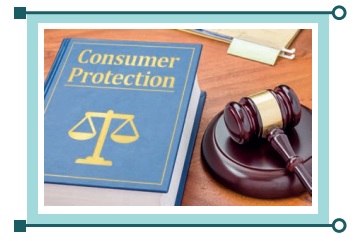
Consumer courts in
India
National Consumer Disputes Redressal
Commission (NCDRC): A
national level court works for the whole country and deals compensation
claimed exceeds rupees one core. The National Commission is the Apex body of
Consumer Courts; it is also the highest appellate
court in the hierarchy. The National Consumer Disputes redressal Commission
(NCDRC), is a quasi-judicial commission in India which was set up in 1988 under
the
Consumer Protection Act of 1986. Its
head office is in New Delhi. The commission is headed by a sitting or retired
judge of the Supreme Court of India.
State Consumer Disputes Redressal
Commission (SCDRC): A
state level court works at the state level with cases where compensation
claimed is above 20 lakhs but up to one core. The State Commission also has the
appellate jurisdiction over the District Forum.
District Consumer Disputes Redressal
Forum (DCDRF): A
district level court works at the district level with cases where the
compensation claimed is up to 20 lakhs.
Important Acts
Ō£ō The Consumer
Protection Act, 1986
Ō£ō The Legal Metrology
Act, 2009
Ō£ō The Bureau of Indian
Standards Act, 1986
Ō£ō The Essential
Commodities Act, 1955
Ō£ō The prevention of
Black Marketing and maintenance of supplies of essential
Ō£ō Commodities Act, 1980
Website of the Department: http:// consumeraffairs.nic.in
Website of the NDRC :http://ncdrc.nic.in/
State Commission :http://ncdrc.nic.in/ statelist.html
District Forums :http://ncdrc.nic.in/ districtlist.html
Wrap up
*
This is dummy text_ dummy text_ dummy text_ dummy text_ dummy text_ dummy text_
dummy text_ dummy text.
*
This is dummy text_ dummy text_ dummy text_ dummy text_ dummy text_ dummy text_
dummy text_ dummy text.
Glossary
1. Commodities trade
goods, supplies Ó«ĄÓ«┐Ó«»Ó«ŠÓ«¬Ó«ŠÓ«░Ó«¬Ó»Ź Ó«¬Ó«ŠÓ«░Ó»üÓ«│Ó»ŹÓ«ĢÓ«│
2. Prevalent very
common, frequent Ó«ÄÓ«ÖÓ»ŹÓ«ĢÓ»üÓ««Ó«┐Ó«░Ó»üÓ«ĢÓ»ŹÓ«ĢÓ»üÓ««Ó»Ź, Ó«ĄÓ«┤Ó«ĢÓ»ŹÓ«ĢÓ««Ó«ŠÓ«®
3. Cluster a grouping
of a number of similar things, bunch Ó«żÓ»ŖÓ«ĢÓ»üÓ«¬Ó»ŹÓ«¬Ó»üÓ«ĢÓ»Ź Ó«ĢÓ»üÓ«┤Ó»ü, Ó«żÓ«┐Ó«░Ó«│
4.Instantaneously immediately,
without hesitation Ó«ēÓ«¤Ó«®Ó«¤Ó«┐Ó«»Ó«ŠÓ«ĢÓ«Ģ, Ó«ĢÓ«ŻÓ«¬Ó»ŹÓ«¬Ó«¬Ó»ŖÓ«┤Ó»üÓ«żÓ«┐Ó«▓Ó»Ź
5. Spurious invalid,
fake Ó«¬Ó«ŠÓ«▓Ó«┐Ó«»Ó«ŠÓ«®, Ó«¬Ó«ŠÓ«»Ó»ŹÓ«»Ó«®
6. Vulnerable attacked
either physically or emotionally, helpless Ó«¬Ó«ŠÓ«żÓ«┐Ó«ĢÓ»ŹÓ«ĢÓ«¬Ó»ŹÓ«¬Ó«¤Ó«ĢÓ»ŹÓ«ĢÓ»éÓ«¤Ó«┐Ó«» Ó«åÓ«¬Ó«żÓ»ŹÓ«żÓ«®
7. Redress compensate,
remedy, rectify Ó«ĢÓ»üÓ«▒Ó»ł Ó«©Ó«┐Ó«ĄÓ«░Ó»ŹÓ«żÓ«żÓ«┐ Ó«ĢÓ»üÓ«▒Ó»ł Ó«żÓ»ĆÓ«░Ó»ŹÓ«ĢÓ»ŹÓ«ĢÓ»üÓ««Ó»Ź
8. Pecuniary relating
to money, financial Ó«¬Ó«¬Ó«ŠÓ«░Ó»üÓ«│ Ó«ÜÓ«ŠÓ«░Ó»ŹÓ«©Ó»Ź Ó«¬Ó«ŻÓ«ĄÓ«ĢÓ»łÓ«ĢÓ«»Ó«ŠÓ«®
Related Topics